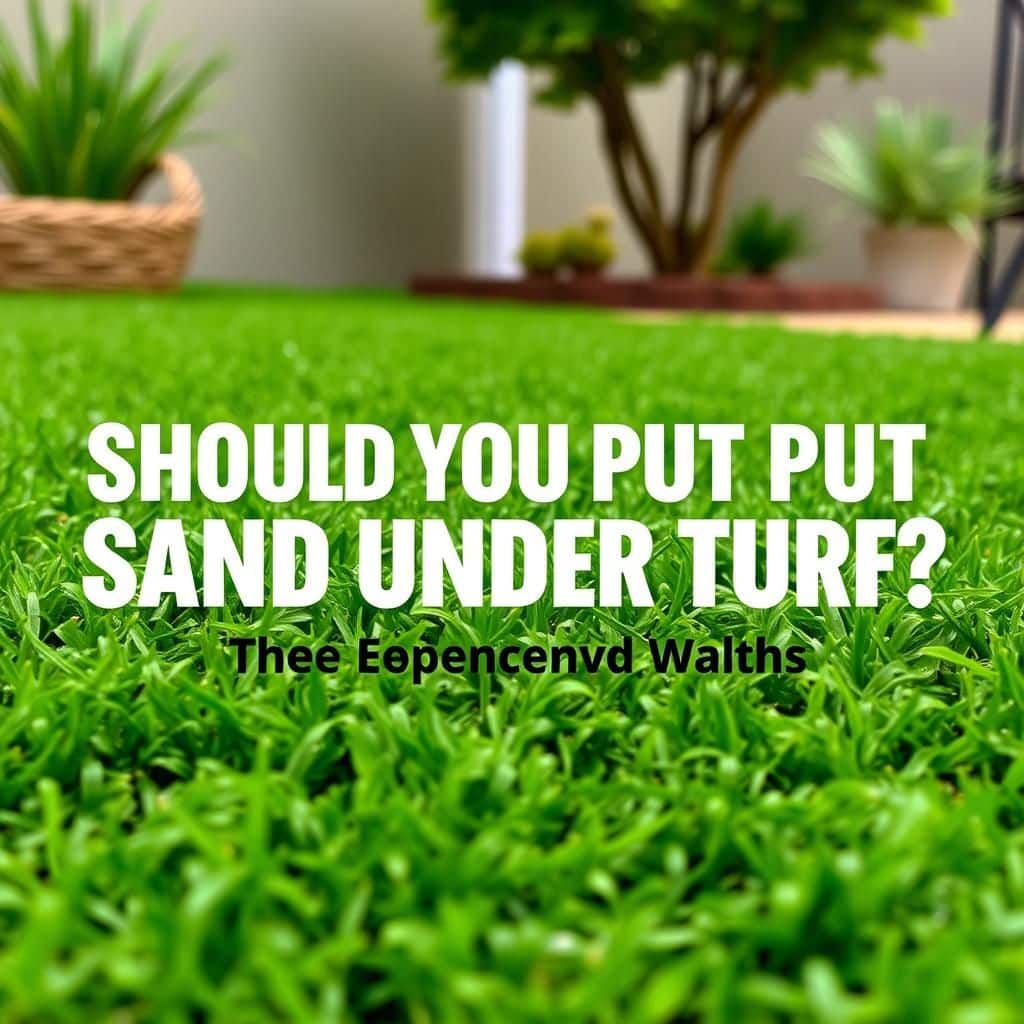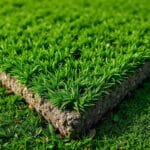Should You Put Sand Under Turf? The Essential Guide to Turf Installation

When it comes to installing artificial turf, one of the most frequently debated topics is whether or not to use sand as a base layer. The decision can significantly affect the performance, longevity, and appearance of your turf. This essential guide will explore the pros and cons of placing sand underneath your turf, including how it influences drainage, stability, and maintenance. By understanding the role sand can play in your installation process, you can make an informed choice that suits your specific needs, ensuring a successful outdoor space that looks great year-round.
Should You Put Sand Under Turf?
When installing artificial turf, the decision to put sand underneath can significantly impact the overall performance and longevity of the turf. Using sand as a base layer can provide improved drainage, help maintain the stability of the turf, and prevent it from shifting or wrinkling over time. Additionally, a sand base can support the weight of the turf and any foot traffic, helping to distribute pressure evenly. However, it is essential to choose the right type and amount of sand to avoid issues like compaction or inadequate support. Consulting with a professional installer can help ensure that the turf is set up correctly for optimal performance.
Benefits of Using Sand Under Turf
One of the primary benefits of using sand under turf is enhanced drainage, which is crucial for preventing water pooling and ensuring that the underlying soil remains dry. This can help to prolong the life of the turf and reduce maintenance needs. Additionally, sand can provide a stable base that reduces the risk of movement, keeping the turf smooth and even. It can also help maintain the appropriate infill levels, providing cushioning and support for foot traffic.
Types of Sand Suitable for Turf Installation
When selecting sand for turf installation, it’s essential to choose the right type. Coarse sand, like sharp or builder's sand, offers better drainage properties compared to fine sand, which can compact over time and lead to drainage problems. Additionally, it is important to avoid silica sands, as they can become too hard and inhibit the proper function of the turf. Opting for washed, clean sand will help reduce contaminants that could affect the turf’s appearance and performance.
Potential Downsides of Using Sand
There are several potential downsides to using sand under turf, including the risk of compaction, which can limit drainage and create an uneven surface. Some types of sand may also shift over time, leading to gaps and bumps in the turf. Additionally, if not properly installed, sand can settle unevenly, causing issues with the stability of the turf. Homeowners should be aware of these challenges and consider the pros and cons of using sand as a base material.
See also:
Installation Process for Sand Under Turf
The installation process for putting sand under turf involves several steps. First, the area must be properly prepared by clearing any debris and leveling the ground. Next, a layer of sand is evenly spread across the desired area to create a stable base. It is essential to compact the sand to ensure it provides adequate support, followed by covering it with the artificial turf. After laying the turf, infill material may be added on top to enhance performance and provide additional support.
Influence of Climate on Sand Use Under Turf
The climate can significantly influence whether to use sand under turf. In areas with heavy rainfall, incorporating sand can help improve drainage and prevent water from pooling on the turf surface, which is essential for avoiding mold and mildew growth. Conversely, in drier climates, using sand might not be as necessary, but it can still provide benefits in terms of stability and support. Understanding local climate conditions can help homeowners make informed decisions about the use of sand under their turf.
| Consideration | Details |
|---|---|
| Drainage | Helps prevent pooling of water, promoting turf health. |
| Stability | Provides a solid foundation, reducing movement and shifting. |
| Type of Sand | Coarse, clean sand is preferred for optimal performance. |
| Potential Risks | Compaction and settling can create uneven surfaces. |
| Climate Impact | Consider the local climate to determine sand necessity. |
Benefits of Using Sand Under Turf Installation
Using sand under turf offers multiple advantages that enhance the overall performance and longevity of the installation. First, sand provides excellent drainage, preventing water from pooling on the surface and facilitating healthy grass growth. Furthermore, it contributes to creating a firm but flexible base that allows for root development and minimizes the risk of turf shifting or wrinkling over time. The use of sand also helps maintain a level surface which is crucial for not only the aesthetics of the lawn but also for playability in sports or recreational areas. Ultimately, sand serves as a support layer that combines both functional and environmental benefits for your turf.
Types of Sand Suitable for Turf Installation
When selecting sand for turf installation, it's essential to choose the right type. Sharp sand is often recommended due to its angular particles that lock together well, providing excellent drainage and stability. Additionally, washed sand is another option that has been cleaned of impurities, ensuring it won’t retain moisture and leads to proper drainage. Avoid using play sand or fine silts, as they can create a compact layer that traps water and can lead to mold or lawn diseases. Selecting the correct type of sand is crucial for ensuring a healthy and vibrant turf.
How to Prepare the Base Before Adding Sand
Proper preparation of the base before adding sand is vital for effective turf installation. Begin by clearing the area of any debris, rocks, and old grass to create a clean surface. It's important to then level the ground, using a rake to ensure even distribution, preventing any low spots that could lead to water pooling. After leveling, consider lightly compacting the soil to create a solid foundation. This groundwork prepares the area for the sand layer, ensuring that it has the best possible conditions for successful turf growth.
See also:
Installation Tips for Adding Sand Under Turf
When installing sand under turf, it's important to follow best practices to optimize results. Begin by spreading an even layer of sand, ideally between 1-2 inches, across the prepared base. Use a rake to level the sand and eliminate any clumps. Ensure that the sand layer is moistened slightly to help it settle properly before placing the turf on top. This not only improves adhesion but also ensures that the turf can root properly. It’s vital to avoid over-saturating the sand, as this can lead to instability and affect the turf's performance.
Common Mistakes to Avoid When Using Sand
One common mistake when using sand for turf installation is skimping on the thickness of the sand layer. Insufficient sand can lead to drainage issues and instability, causing the turf to wear unevenly. Another mistake is using the wrong type of sand, such as fine or silty sand, which can trap water and negatively impact the turf health. Additionally, failing to properly compact the base or leveling it can result in uneven surfaces that affect both appearance and functionality. By being mindful of these common pitfalls, you can ensure a successful turf installation.
Maintenance Considerations for Turf on Sand Base
Once your turf has been installed on a sand base, ongoing maintenance is key to preserving its condition. Proper watering is crucial, as sand allows for quick drainage but may require more frequent watering to keep the turf from drying out. Additionally, regular aeration can help alleviate any compaction issues and promote root growth. It’s also important to periodically check for any displaced sand, as maintaining an even surface is essential for turf durability. Implementing these maintenance practices ensures that your investment in turf remains attractive and functional for years to come.
Questions from Our Readers
Should you put sand under turf?
Yes, putting sand under turf can provide better drainage and help create a stable foundation. Sand allows for water to flow through easily, reducing the risk of puddling and promoting healthy grass growth.
What type of sand is best for installing turf?
The best type of sand for installing turf is angular or coarse-grained sand. This type of sand provides excellent stability and drainage while preventing compaction, which is essential for maintaining the longevity of the turf.
See also:
How thick should the sand layer be under turf?
The sand layer under turf should typically be between 1 to 2 inches thick. This thickness allows for proper support and drainage, ensuring that the turf can thrive without excess moisture buildup.
Can you use other materials instead of sand under turf?
While sand is highly recommended, you can also use crushed rock or gravel as an alternative. These materials also promote drainage and stability, but it's important to ensure they are evenly spread to provide a solid base for the turf.

If you want to read more articles like Should You Put Sand Under Turf? The Essential Guide to Turf Installation, we recommend you check out our Turf category.
Leave a Reply
Related Articles